Copyright 2020 - 2021 irantour.tours all right reserved
Designed by Behsazanhost
Iranian mosques among one hundred symbolic mosques in the world
Iranian mosques among one hundred symbolic mosques in the world
Mosques in Iran are one of the most important destinations for cultural, architectural, artistic, and religious tours that introduce an important part of Iranian history, culture, and authentic Iranian art to everyone. The great and famous mosques in Iran with their unique architecture, and mesmerizing and eye-catching decoration, are one of the main tourist destinations that attract and amaze all tourists. They are expressions of Iranian-Islamic art and architecture that are completed 1400 years old and reflect different historical eras and their architectural style.
There are breathtaking views of the mirror works, blue-hued tiled walls, and glassworks inside the interior halls of the mosques that are admirable to everyone.
Many great civilizations have reserved their most sublime creations for their places of worship, and Islam is no exception. Mosques are the ultimate expression of faith, on which patrons, architecture, and artists have lavished their wealth and powers for nearly fourteen centuries. Muslims have influenced most part of the globe and have founded various mosques all over the world. These mosques not only represent the religious beliefs of Muslims but also represent an important part of Muslim architecture and the architecture of the destination country, which has evolved over 1400 years.
Here is a list of the most influential Iranian mosques in the world among one hundred symbolic mosques in the world.
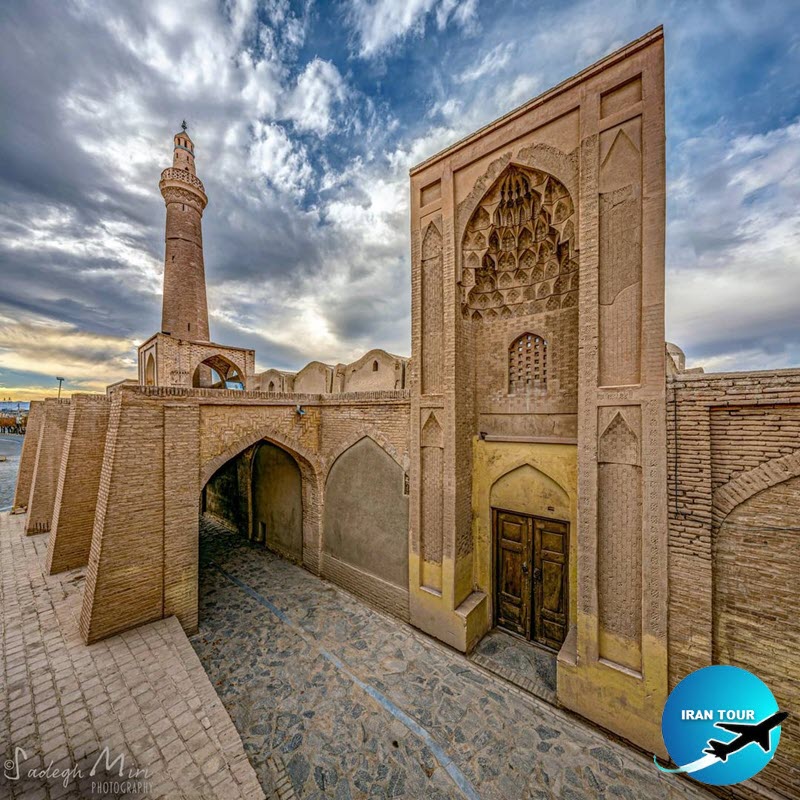 |
Jame Mosque of Nain
Na’in, Iran, Iran/Persia | 10th Century
One of the oldest mosques in Iran, this edifice is still in use and owes its fame to the rare survival of the sumptuous stucco decoration from the 9th-century mihrab bay. Even though they have lost most of their former color, the vine scrolls of the mihrab and the pillars in front still convey a sense of the luxuriant growth that would clearly be prized in a town that stands at the border of Iran’s great central desert. Above the rectangular mihrab, the bay is a vault made from a combination of brackets and quarter domes. This is very likely the first sophisticated use of muqarnas in the world, the vaulting technique that is virtually unique to Islamic architecture.
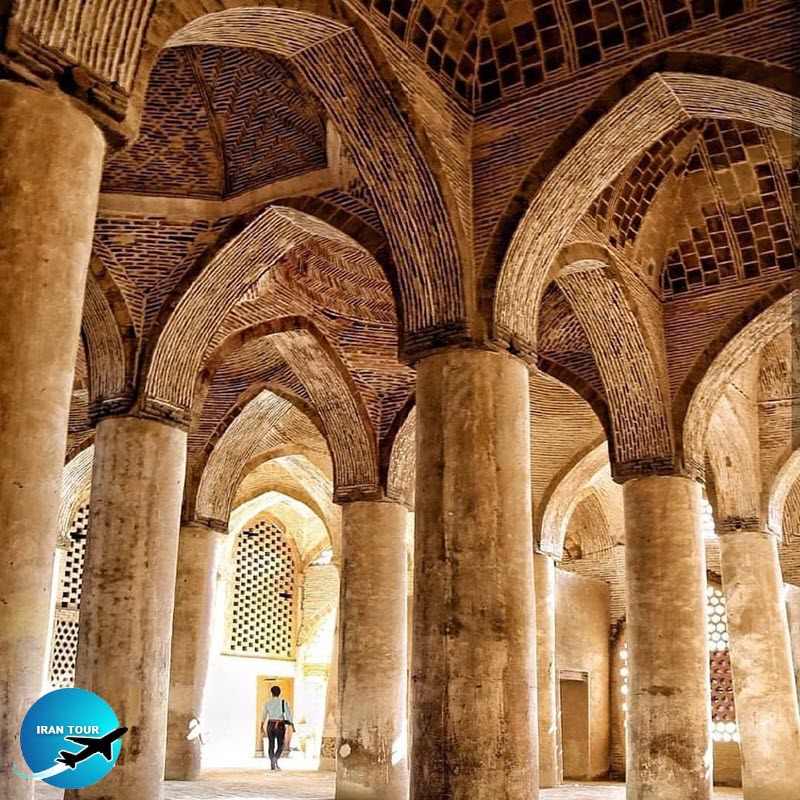 |
Jame Mosque of Isfahan
Isfahan, Iran, Iran/Persia | 11th Century
So important was this monument to Iran’s main medieval city that successive dynasties over the centuries rarely failed to leave their mark on it. In the 1080s, the vizier Nizam al-Mulk added what was then the largest masonry dome chamber in the Islamic world in front of the mihrab, to honor the ruling Seljuq sultan, Malikshah. In 1088, a rival vizier built another even finer dome chamber opposite it, and in the 12th century, four Eyvans were added to the courtyard, introducing what would become known as the classical Iranian mosque plan. In 1310, the Ilkhanid Sultan Uljaytu (for his funerary mosque, see no. 42) inserted a magnificent stucco mihrab to announce his recent conversion to Shi‘ism.
The Safavids continued by renovating the tilework of the Evans in the 16th and 17th centuries. More about Jame Mosque of Isfahan
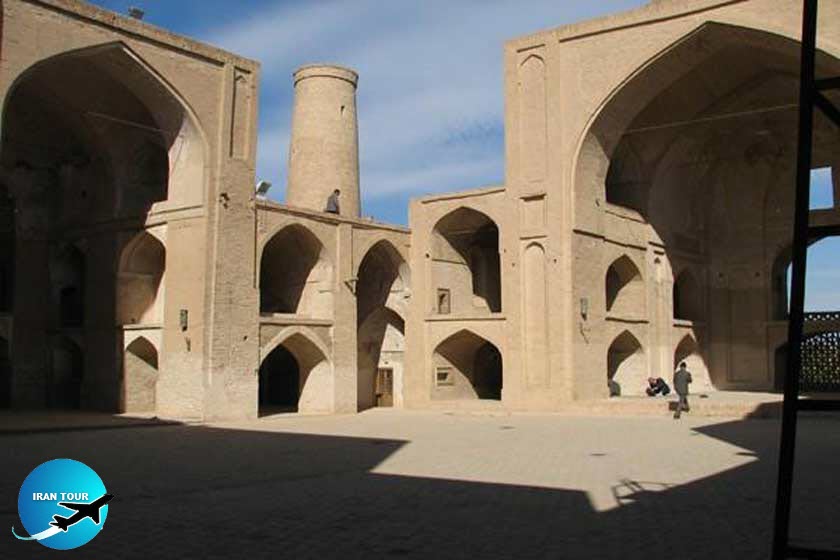 |
Zavareh Friday Mosque
Zavareh, 12th Century
This is the earliest dated mosque (1135) to have a four-Eyvan plan with a qibla dome chamber, one almost certainly inspired by the Friday Mosque of Isfahan. Built on the edge of the Dasht-e Kavir, the great central desert of Iran, its monumental scale dominates the town. As seen in the majestic Kufic inscription laced with arabesques that encircle the dome chamber, elaborate stucco enlivens the brickwork. The muqarnas elements of the squinch of the qibla dome chamber are also an exact copy of those of the Isfahan mosque.
10 beautiful mosques that should be seen in Iran |
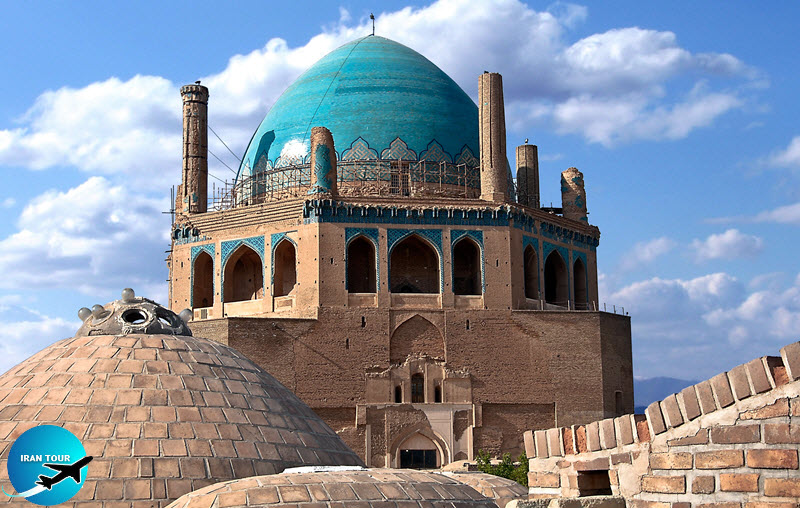 |
Uljaytu Mausoleum Complex
Sultaniyya, Iran, 14th Century
This 165-foot-high tomb was the highlight of the new capital city that the Ilkhanid Sultan Uljaytu (r. 1304–16) founded in 1305. After its completion in 1313, the ruler ordered that the interior decoration be changed from tile to painted plaster. This was probably because Koranic inscriptions could now be added, which the sultan hoped would further his ambitions—abetted by a contemporary military campaign to be the protector of the holy shrines at Mecca and Medina. Uljaytu also added to the main octagon a rectangular room both with crypts underneath and a mihrab, all the better to encourage pilgrims to visit the shrine and pray for him. Today, only the tomb remains of this over amb.
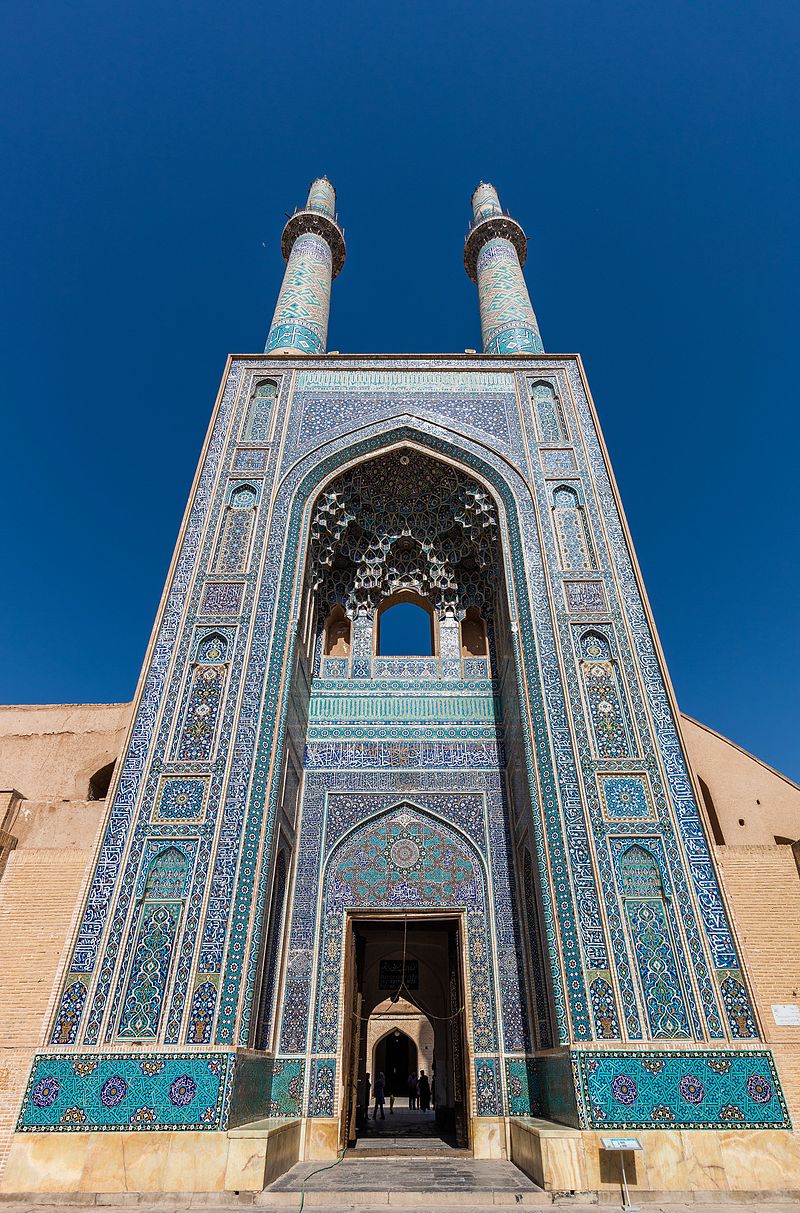 |
Jame Mosque of Yazd
Yazd, Iran, 14th Century
Although a much earlier mosque existed at the same location, the main portal, qibla Eyvan, and dome chamber of the current mosque are mostly the result of building campaigns by the Ilkhanids in 1324 and the Muzaffarids in 1365. Some tiled decoration was also added by the Timurids in the 15th century. The much plainer structures around the courtyard date from the late 18th and 19th centuries. The building has three important innovations; the first is the enlarged opening at the back of the Eyvan, which permits a full view of the interior of the qibla dome chamber from the courtyard. The second is the incorporation of galleries on the upper story of both the dome chamber and the Eyvan which led to it. The third, the vastly increased use of tiled decoration, reflects a trend characterized by other monuments of the period. Particularly attractive is the tile mosaic on the mihrab spandrels, which are exquisitely decorated with the entwined names of “Ali” and “Mohamad".
More about Jame Mosque of Yazd
Top 10 oldest mosques in Iran |
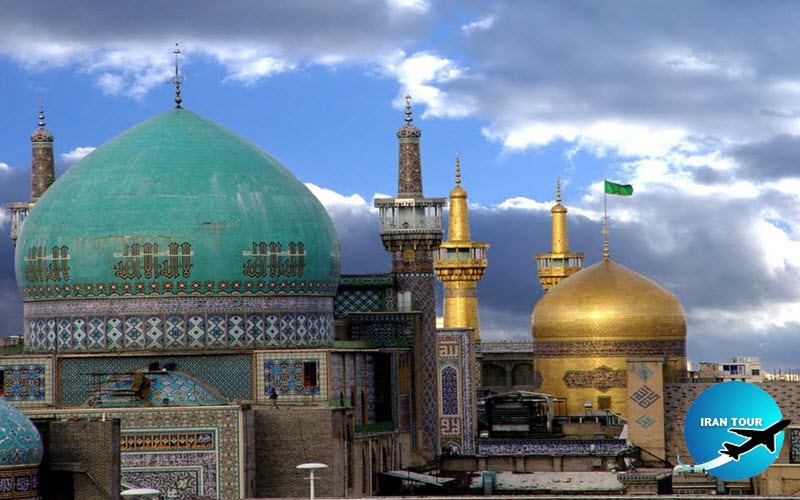 |
Gohar Shad Mosque
Mashhad, Iran, 15th Century
The patron of this mosque (dated 1418), was the wife of the sultan, Timur’s son Shah Rukh, and a powerful political figure in her own right. Originally nestled within surrounding bazaars, the mosque exemplifies a novel Timurid approach, that of façade architecture, as seen in the two-story galleries around the courtyard. The prayer halls located below are only one story in height, so the upper arcades are merely for show. They are also convenient bases for the superb tilework which envelops the courtyard and gives the whole mosque its distinction. The open qibla Eyvan is a feature borrowed from the Yazd Friday mosque, its magnificent foundation inscription is the work of Gawhar Shad’s talented son, Bysunghur.
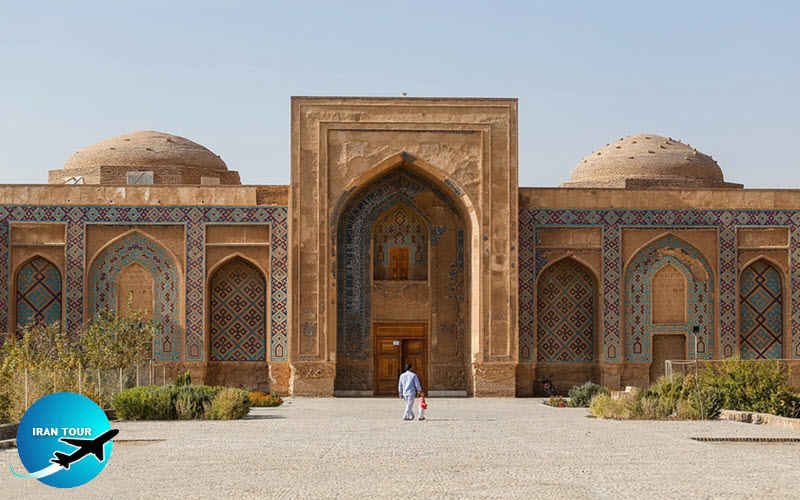 |
Madrasa-yi Ghiyathiyya
Khargird, 15th Century
The architect of the Gawhar Shad mosque in Mashhad, Qavam al-Din of Shiraz, also designed this building (dated 1444), although it signaled the end of his career as he died during the course of its construction. The founder, the vizier Pir Ahmad Khvafi, hailed from the adjacent town, which may explain why its location is remote from the Timurid capital of Ilerat. The entrance incorporates a mosque and lecture hall, which are both topped by a lantern. The accompanying axial recesses in these rooms lend interesting ambiguities to their spatial quality, the whole leading to an innovative blending of the older tripartite division of cube, zone of transition, and dome.
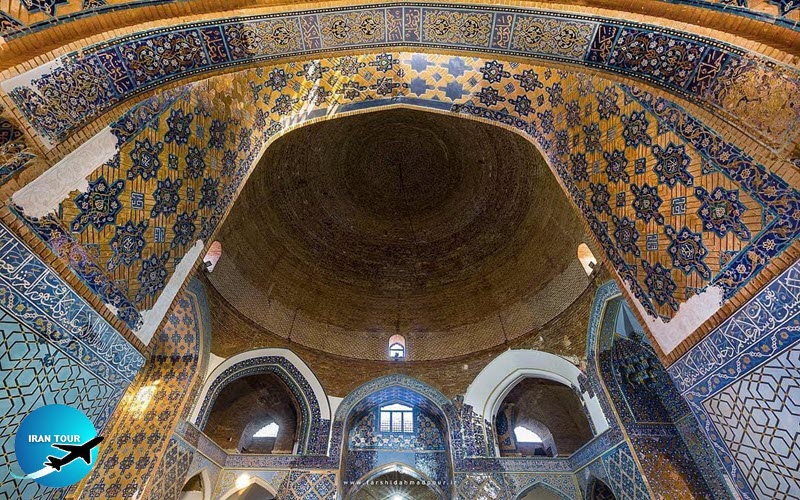 |
Blue Mosque
Tabriz, Iran, 15th Century
The mosque and its funerary rear dome chamber are the only remaining parts of the complex built by Khatun Jan Begum, the wife of Jahan Shah (r. 1449– 67), the ruler of the Kara Konyunlu dynasty whose capital was Tabriz. Its plan, unusual for Iranian architecture, is close to Ottoman prototypes such as the Bursa Yeşil Jami‘. The outstanding tile work used many techniques, including raised unglazed brick with tile mosaic on inscriptions on the entrance Eyvan, nderglaze-painted blue and white for majestic raised arabesques at the base of the corner minarets, and, a unique example in 15th century Iranian architecture, luster tiles at the base of the engaged columns at the entrance. Although severely damaged in an earthquake in the 18th century, the building has recently been thoroughly restored. More about Blue Mosque the Turquoise of Islam
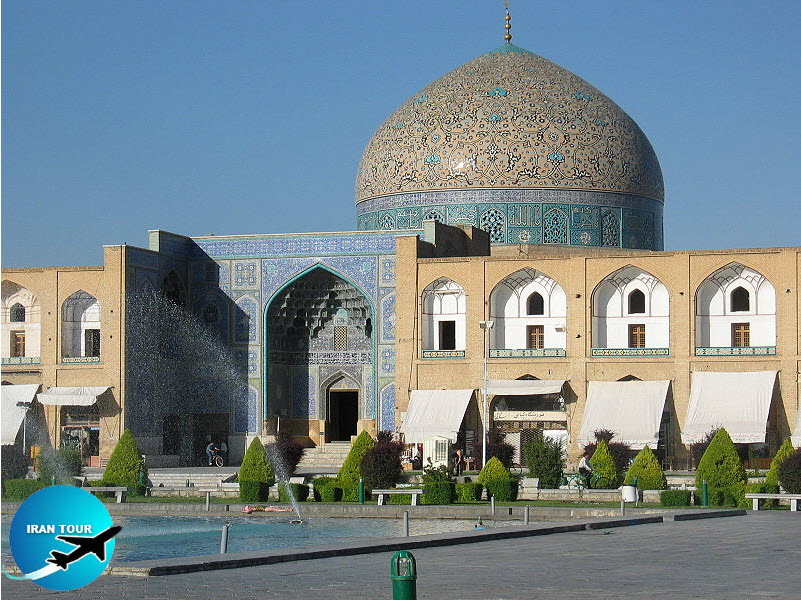 |
Sheikh Lutfallah Mosque
Isfahan, Iran, 16th Century
Tiled as it is both inside and out, this is arguably the ultimate refinement of the Iranian dome chamber. Built from 1593-1618 to adorn Shah Abbas's new maidan, it emphasizes the square's deviance from the direction of the qibla by placing the dome to one side of the entrance Evan. The dome's exterior is the first example where tiles feature decorative arabesques instead of the previously popular geometric patterns. By the time visitors have negotiated the dark and twisting entrance passage, the burst of color that awaits them is even more striking. The twisted turquoise ribs that frame the squinches blend the cube and zone of transition into one. The diminishing lozenges of the dome accentuate its verticality and culminate in a brilliant tiled sunburst at the apex. More about Sheikh Lutfallah Mosque
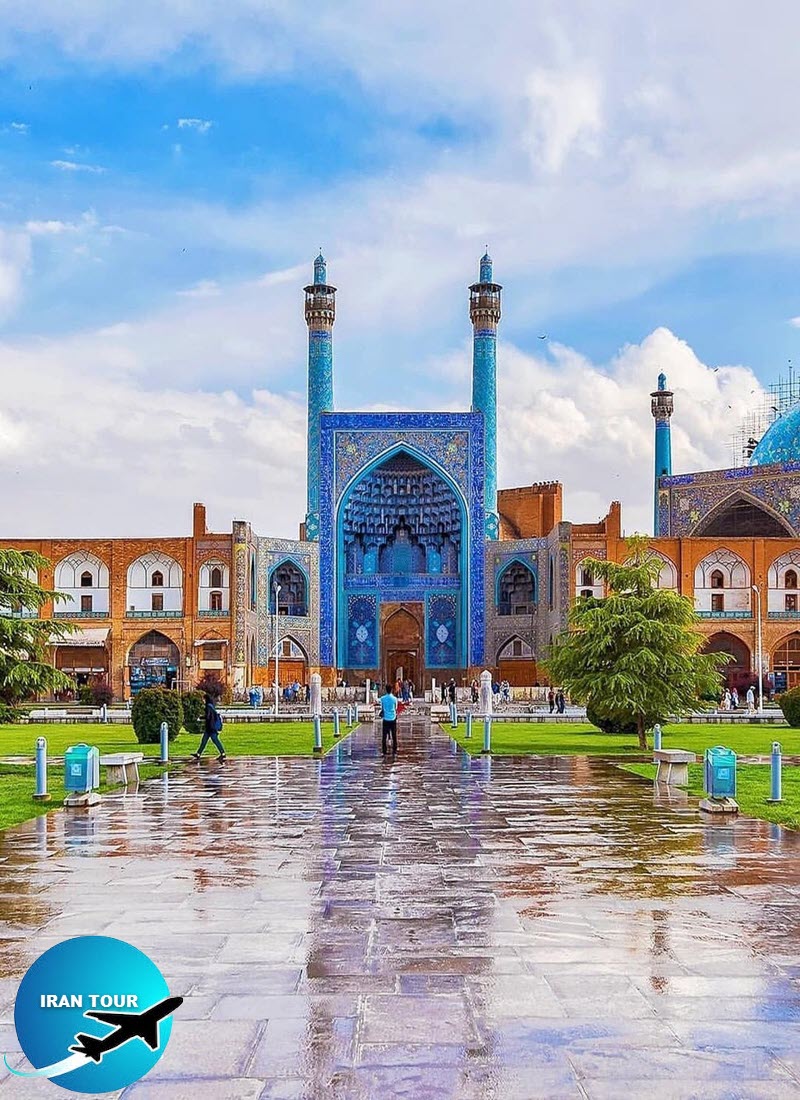 |
Shah Mosque
Isfahan, Iran, 16th Century
This ambitious project was the culmination of the royal square ordered by the Safavid Shah Abbas I (r. 1587–1629). His mosque, begun in 1611 and still uncompleted on his death in 1629, is the pinnacle of Safavid architecture. Its difference in orientation to the adjacent square may have even been an advantage, as the twist in axis ensures that views of the soaring qibla dome chamber (right) with its spectacular tiled arabesques were not blocked by the towering entrance Eyvan. The unusual scheme of placing dome chambers behind the side Eyvans was borrowed from Timur’s Bibi Khanum mosque. The central courtyard contains a large pool (left) whose tranquility permits reflections of the surrounding arcades. The revetment of this enormous space with overglaze-painted tiles was one of the reasons delaying the completion of the building.
More about Shah or Imam Mosque
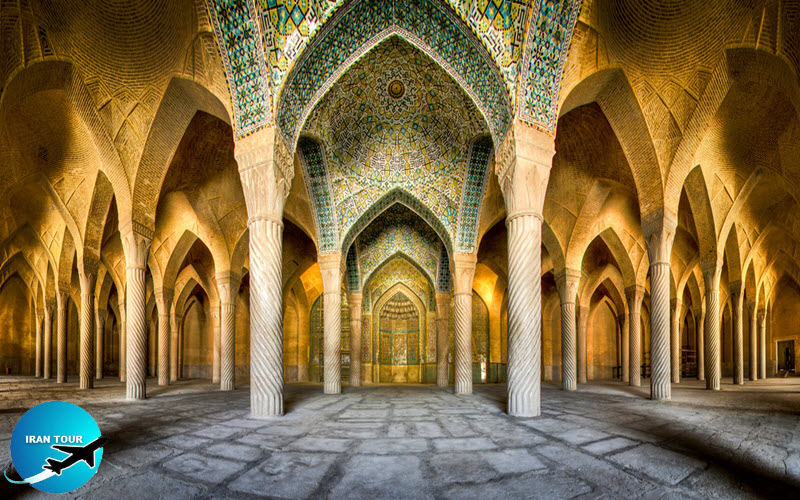 |
Vakil Mosque
Shiraz, Iran, 18th Century
Vakil means “regent,” which was the title used by Karim Khan (r. 1751-79), who founded both the Zand Dynasty, which barely lasted beyond his death and this mosque in 1766—the only major one built in Iran during the 18th century. As later inscriptions attest, much of the tilework was replaced after the earthquakes of 1824 and 1853. Unlike most major earlier Iranian mosques, this mosque has only two Eyvans instead of the usual four, and rather than containing a dome chamber in the qibla prayer hall, returns to the use of the earlier simple hypostyle form. This prayer hall, five bays deep, is the glory of the mosque, containing forty-eight twisted marble columns which were specially obtained from as far away as Azerbaijan.
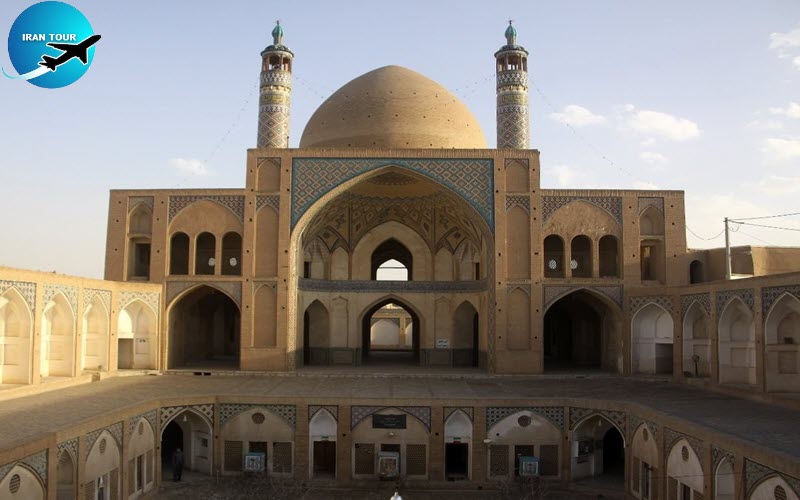 |
Agha Bozorg Mosque
Kashan, Iran, 19th Century
This building was erected in 1845 for one of the most important religious scholars of the age, Mahdi Naraqi. It is unique not just for combining the functions of madrasa and mosque, but for its unusual plan. An entrance Evan leads to a large patio overlooking a sunken courtyard for students, at the end of which is a large dome chamber preceded by another Evan. In addition to being used as a place for prayer, the large dome chamber has an exceptionally open area that might have served as a Husayniyya where Shi‘a mourning ceremonies were performed.
Namaz Khana
Tehran, Laleh Park, 20th Century
This building, which literally means the “house of prayer," was built in 1997 by Kamran Diba, the architect of the nearby Museum of Modern Art, to provide a prayer space in the adjacent park for passersby. The form couldn’t be simpler: two cubes, the outer parallel to its access path provides a shield from street noise and adds privacy, while the inner prayer space is oriented at an oblique angle toward the qibla. The traditional mihrab has been replaced by a distant sculpture of a hand mounted on a pole, on which “Allah” is silhouetted, which can be seen through a narrow vertical opening in the cubes. The building’s marriage of utmost simplicity, like the unroofed concrete cubes, with a sophisticated rethinking of basic elements such as the mihrab, makes it a landmark in contemporary.
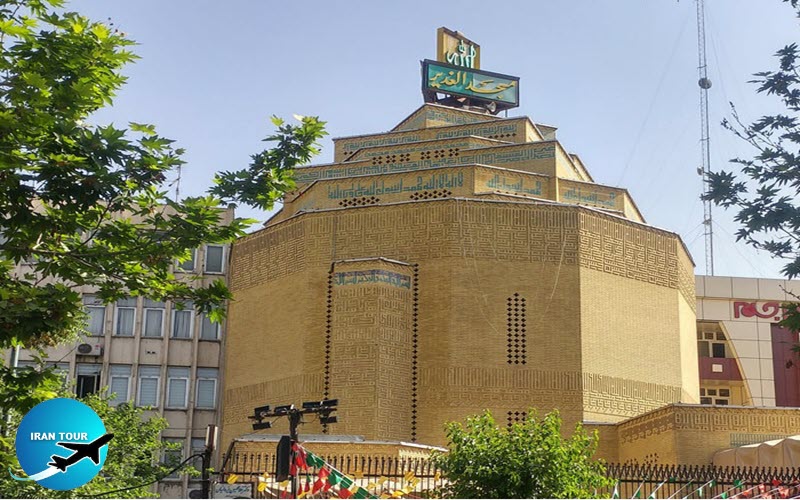 |
Ghadir Mosque
Tehran, Iran, 20th Century
Commissioned in 1980 by residents of the neighborhood in which it sits, the mosque, completed in 1987, and its adjacent Islamic center were created to serve local needs. The complex contrasts strongly with the surrounding buildings by using brick and tile that hark back to earlier Iranian traditions. The variation in its qibla axis from the neighboring street is expressed clearly in the projecting mihrab niche. However, the dominant and most successful element of the mosque is the large dome chamber, composed of an unusual series of rotated diminishing squares. The prominent use of Kufic inscriptions in unglazed brick and blue tiles reaches a crescendo in the names of God within the nested squares that make up the interior of the dome.
Vali-e-Asr Mosque
Tehran, Iran, 21st Century
The creation of this mosque and cultural center has been the source of much controversy because of the unmistakable absence of a minaret and an obvious dome. The architects Reza Daneshmir and Catherine Spiridonoff shrewdly justify these omissions by citing the Koran, which doesn’t dictate any specific form for mosques. They underscore this by expounding the Koranic virtues of modesty, simplicity, and faith which they claim were the basis of their decisions. The swooping, dramatic curves of the roofline echo Zaha Hadid’s work, but modesty does indeed prevail in its attempt to harmonize with rather than upstage its neighbor, the City Theatre. The ribbon-like windows that grace the exterior, which would be unusual in any architectural setting, are large enough to flood the interior with light and help provide a dazzling contrast to the blue-tiled geometric star pattern of the recessed mihrab.
- Details
- Category: IRAN Blog